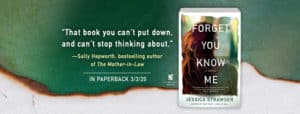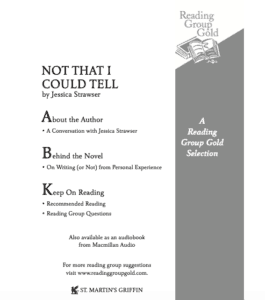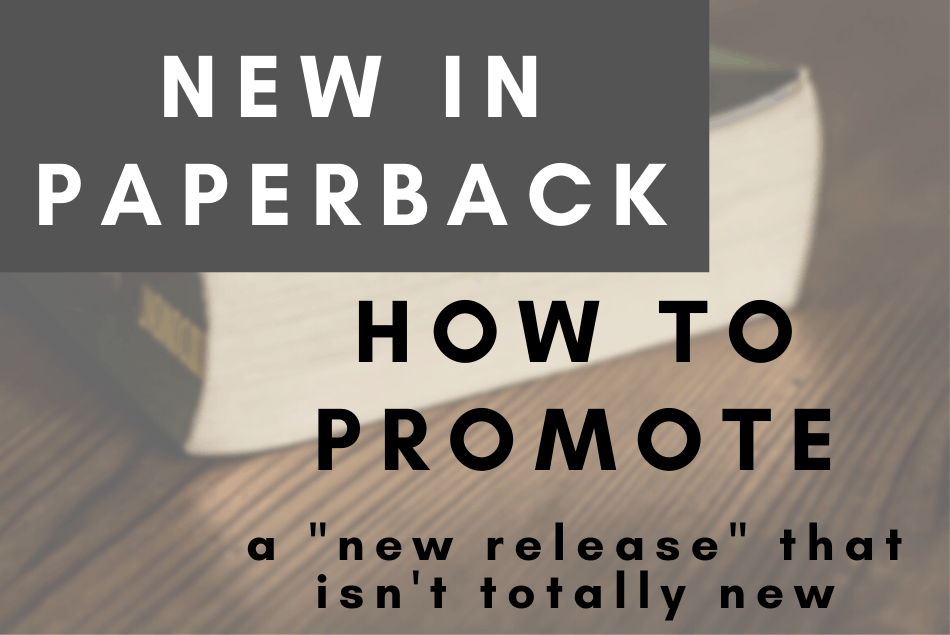If you’re published (or self-published) in hardcover, your trade paperback release—usually months to a year after the initial launch—is a welcome second chance for your book to reach new readers. New-in-paperbacks come about in other ways, too: Say you debuted in trade paper, but your publisher sees evidence that your book could do well in the mass market paperback market. Or maybe your rights from a backlist title have reverted to you, and you’ve opted to republish on your own.
Any new release is cause for celebration (say it with me: Hooray!). But when it comes time for marketing (read: shameless self-promotion)—especially to your existing followers—pushing a new edition of a book that’s already been available in other formats can feel awkward.
I’ve been paying closer attention to how fellow authors handle this, as I have not one but two paperback releases via St. Martin’s Press in the months ahead: The trade paper of Forget You Know Me out tomorrow (!), and the mass market edition of Almost Missed You coming this summer. I’ve navigated new-in-paperback launches before, of course, but doing them back-to-back has compelled me to pause, take stock, and take notes.
What are some secrets to effectively “soft sell” something you’ve already been putting promotional muscle behind for a while—without bringing to mind clichés about broken records and dead horses?
Try these ways to freshen up your efforts when your book is born again.
1. Rest assured that format matters.
I’ve visited enough book clubs and attended enough festivals to say this with confidence: Some readers are very (very!) discerning about formats.
I read books any and every way they come—print, digital, audio—so sometimes I’m surprised by the gusto with which readers will shun a certain edition … and the lengths of time they’ll wait for the one they want. Now is a good time to remember that not everyone has embraced e-readers. And sometimes, the more enthusiastic the reader, the more selective they are about their preferred feel of a paperback versus hardcover in their hand (or the weight of it in their suitcase).
So, too, are many readers price sensitive. Book clubs in particular are a happy place for paperbacks: Many read only paperbacks for budget-friendly reasons.
It follows, then, that your title is now under consideration by readers who weren’t considering it before based on format alone. Let this ease any self-conscious feelings about your promotional efforts. After all, they can’t read your book in the format they prefer if they don’t know about it.
2. Go ahead: Judge the book by its cover.
If your new edition boasts a redesigned cover (as my Forget You Know Me does), tell us how excited you are about it. Your gushing is also a public service announcement that if readers knew it by the old cover, they should look for this one now. And hey, if the first one didn’t appeal, maybe this one will.

3. Remind us of how far it’s come.
 What’s new with your book since the hardcover launch? Maybe it’s been chosen for a certain Best Of list, earned a great review that didn’t make the initial jacket, or even been picked up by a retailer such as Costco. This is your excuse to trumpet that triumph again—preferably with new graphics or visuals to go with it.
What’s new with your book since the hardcover launch? Maybe it’s been chosen for a certain Best Of list, earned a great review that didn’t make the initial jacket, or even been picked up by a retailer such as Costco. This is your excuse to trumpet that triumph again—preferably with new graphics or visuals to go with it.
When my Not That I Could Tell released in paperback last year, it also hit Target stores nationwide, a big first for me. My shelfie in a Cincinnati store became one of my most liked photos of the entire year.
-
4. Include timely or personal anecdotes.
I used a real-life historic restaurant as a backdrop of several fictional scenes in Forget You Know Me—and when it almost closed its doors last year, I was flooded with messages from readers. Together, we all lamented that the business was in danger, and cheered when public outcry (and some budgetary help from the city) kept it open.
Nothing from real-life that ties in? What about an encounter from one of your signings or appearances—a poignant conversation with a reader that stayed with you?
Share how your own experience with the book and its readers has been enhanced since its initial release … which, by the way, is now new in paperback.
 5. Spotlight added features.
5. Spotlight added features.
My trade paperbacks have “Reading Group Gold” sections inside that include discussion guides as well as other bonus content (such as essays, an interview with the author, and/or recommended reading lists). If your book has anything new in it at all (perhaps a preview chapter of next year’s release?) post teasers! These won’t just give you something new to say: They’ll drive interest.
6. Talk up your event calendar.
Not everyone does a book tour for a new-in-paperback (that’s up to you and/or your publisher), but chances are you’ll be somewhere, even if it’s just some local book group discussions. Whenever you let people know where they can meet you, where you’re going, or where you’ve been, you’ll also be reminding them that you’re out and about in your best new clothes because your book is too.
What strategies have worked for you—or what questions do you have for other authors who’ve been there? Join the discussion with Career Authors on Facebook.





